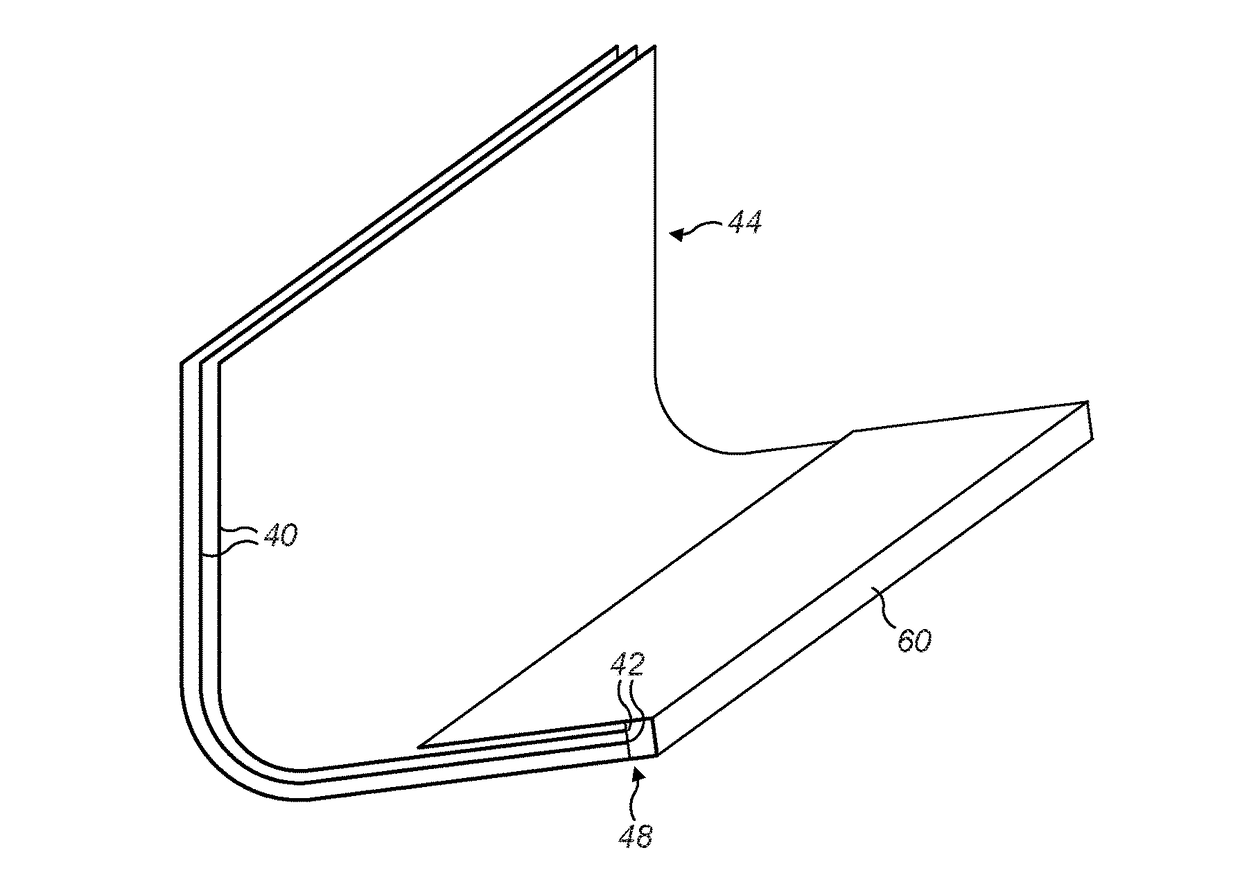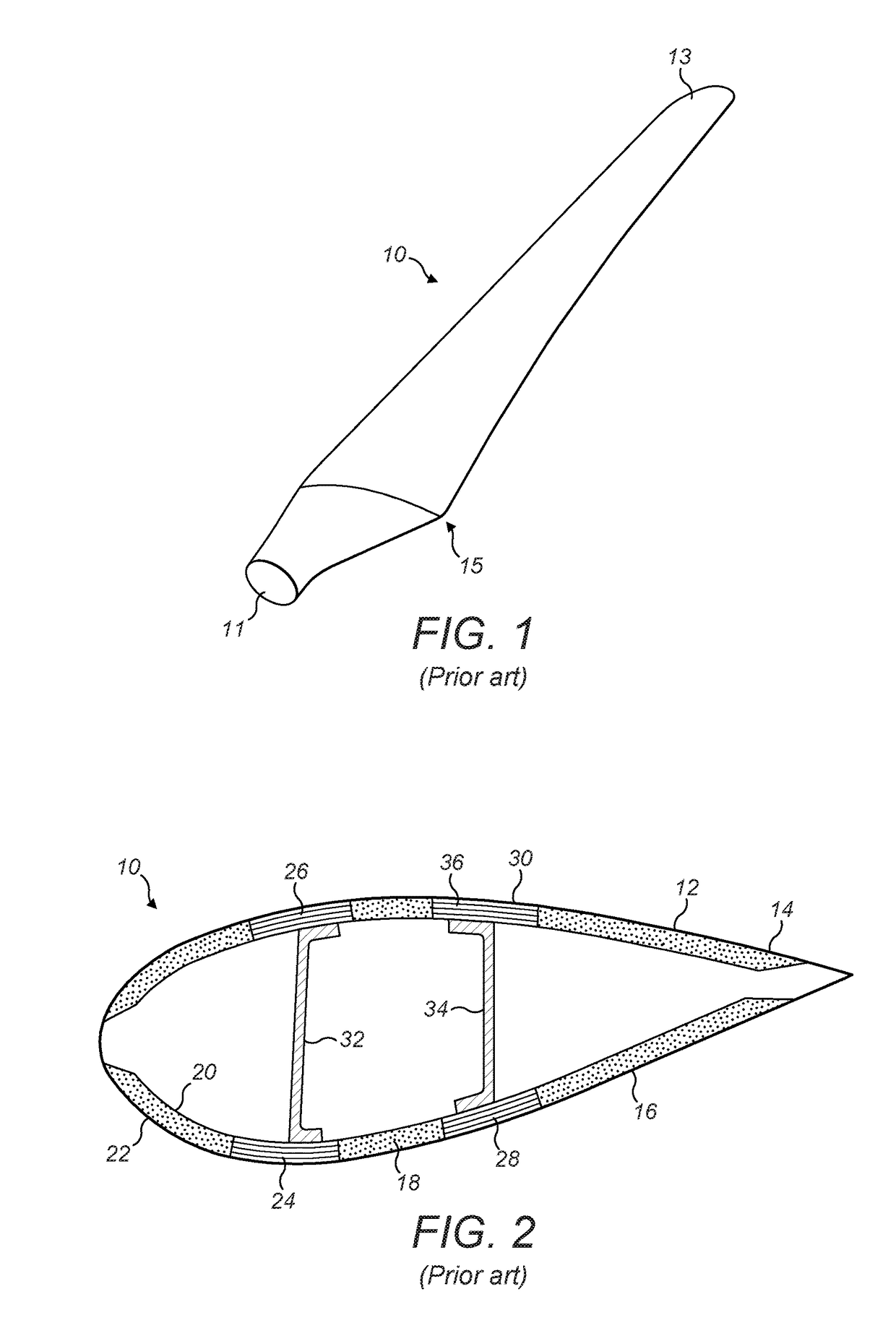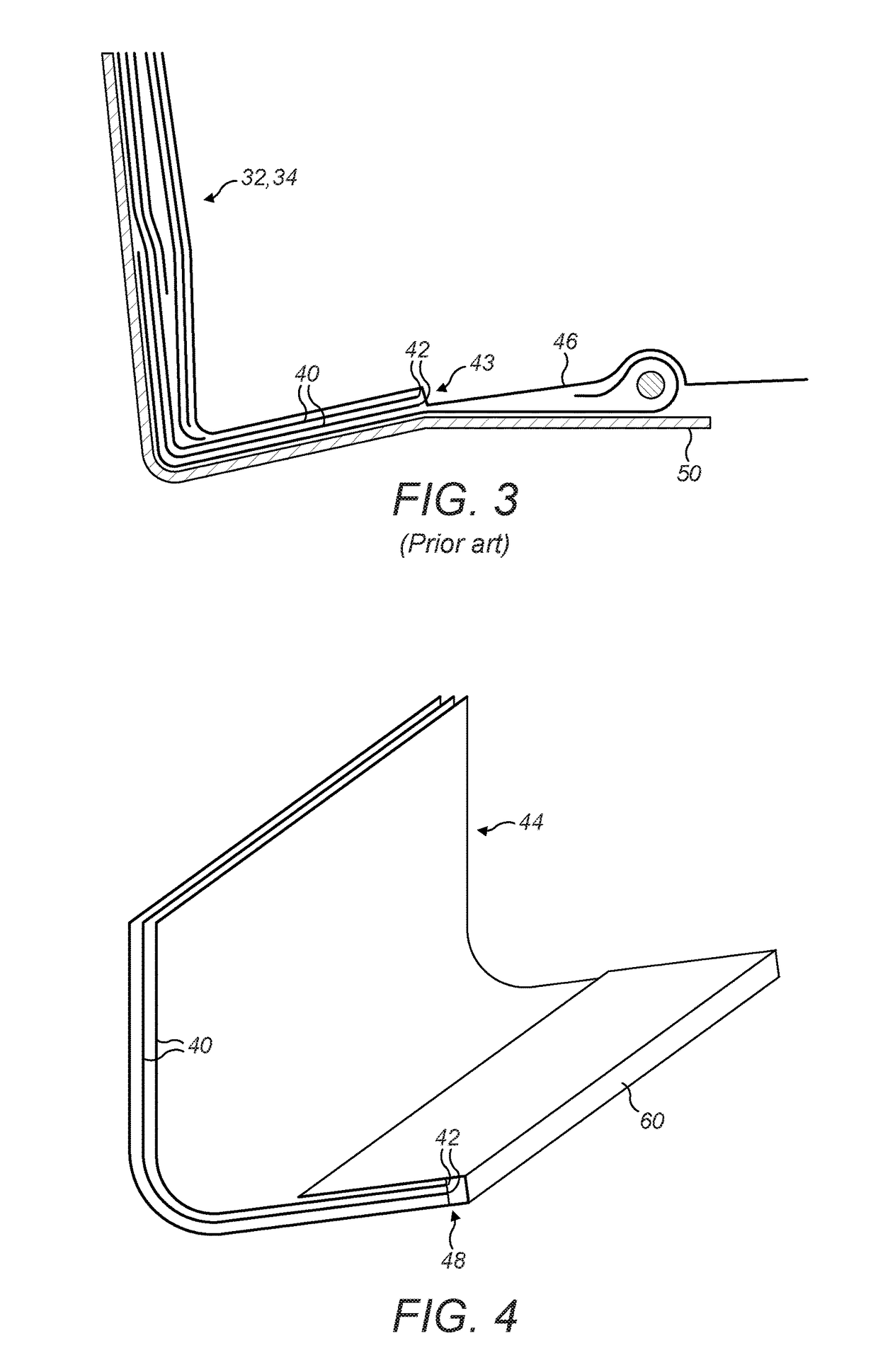Composite component having a safety edge
a technology of composite components and safety edges, applied in the field of composite components having a safety edge, can solve the problems of /b> being difficult and potentially unsafe to handle, reducing the safety of the component, so as to facilitate bonding and form quickly and easily.
- Summary
- Abstract
- Description
- Claims
- Application Information
AI Technical Summary
Benefits of technology
Problems solved by technology
Method used
Image
Examples
Embodiment Construction
[0040]FIG. 4 illustrates a composite component 130 for a wind turbine blade. In this example, the composite component 130 is a shear web, and FIG. 4 illustrates the bottom part of the shear web only. The shear web 130 comprises a laminate 44 formed by a plurality of laminate layers 40, for example glass-fibre fabric layers, which are integrated together by cured resin. Edges 42 of the laminate layers 40 define a laminate edge 48. A strip of foam 60 extends alongside the laminate edge 48 and is integrated with the laminate 44 by the cured resin. As will be described in further detail later, the strip of foam 60 defines a hand safe edge of the shear web 130, allowing the shear web 130 to be safely handled in use.
[0041]A method of making the shear web 130 will now be described with reference to FIGS. 5A to 5I.
[0042]Referring first to FIG. 5A, to make the shear web 130, a mould tool 50 is provided, which has a mould surface 51 corresponding in shape to the outer contour of the shear web...
PUM
| Property | Measurement | Unit |
|---|---|---|
| thickness | aaaaa | aaaaa |
| thickness | aaaaa | aaaaa |
| thickness | aaaaa | aaaaa |
Abstract
Description
Claims
Application Information
 Login to View More
Login to View More - R&D
- Intellectual Property
- Life Sciences
- Materials
- Tech Scout
- Unparalleled Data Quality
- Higher Quality Content
- 60% Fewer Hallucinations
Browse by: Latest US Patents, China's latest patents, Technical Efficacy Thesaurus, Application Domain, Technology Topic, Popular Technical Reports.
© 2025 PatSnap. All rights reserved.Legal|Privacy policy|Modern Slavery Act Transparency Statement|Sitemap|About US| Contact US: help@patsnap.com



